
How to Use Inverter: Examples, Pinouts, and Specs
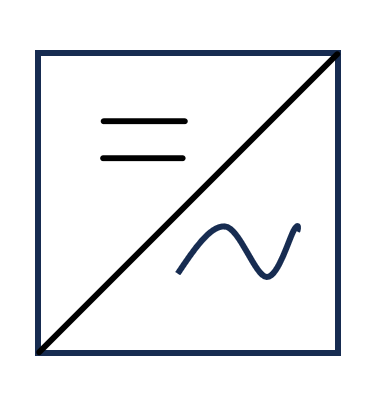
 Design with Inverter in Cirkit Designer
Design with Inverter in Cirkit DesignerIntroduction
An inverter is an electronic device that converts direct current (DC) into alternating current (AC). This conversion allows DC power sources, such as batteries or solar panels, to power AC devices, including household appliances, industrial equipment, and other systems designed to operate on AC power. Inverters are essential in renewable energy systems, uninterruptible power supplies (UPS), and portable power solutions.
Explore Projects Built with Inverter
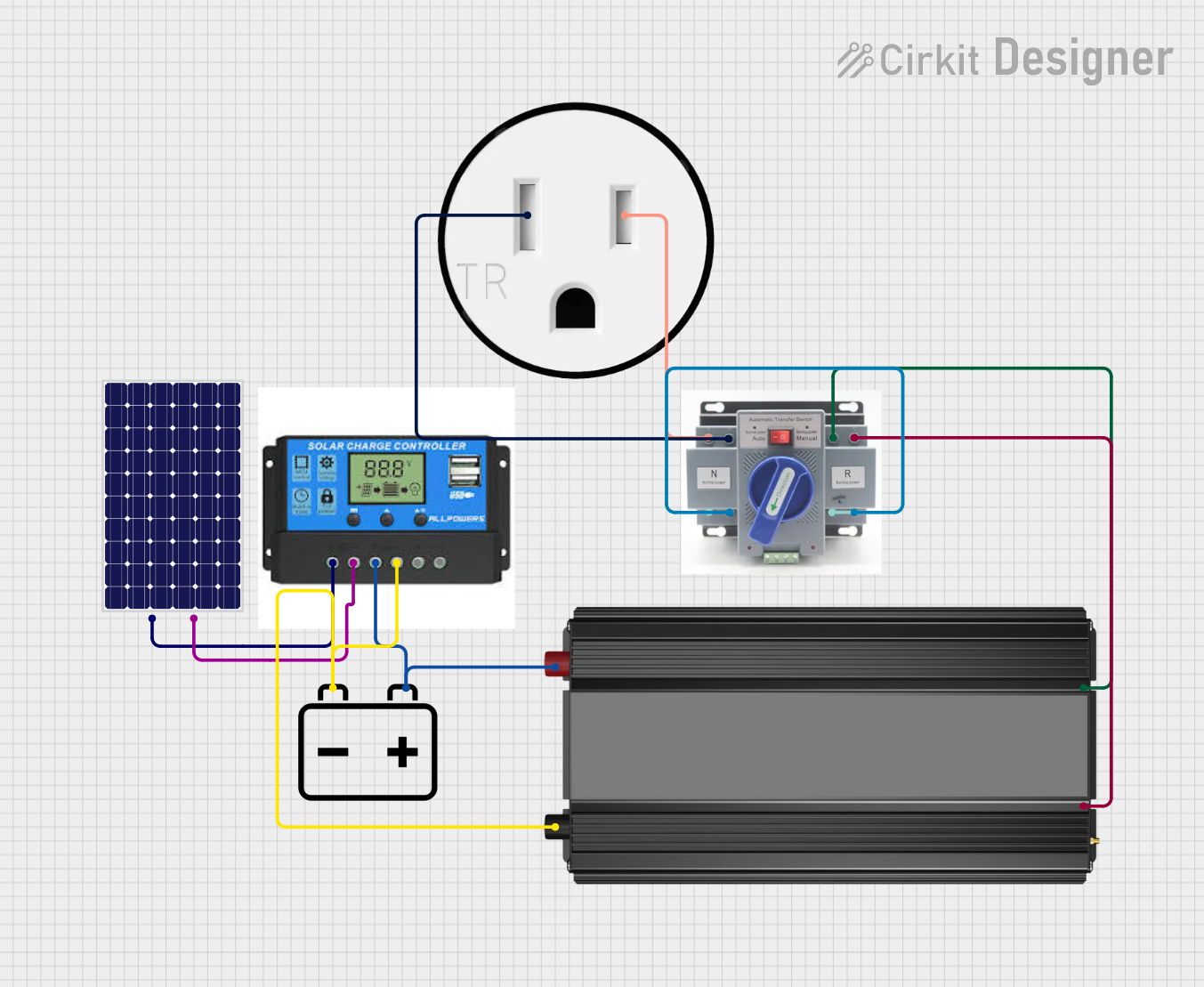
 Open Project in Cirkit Designer
Open Project in Cirkit Designer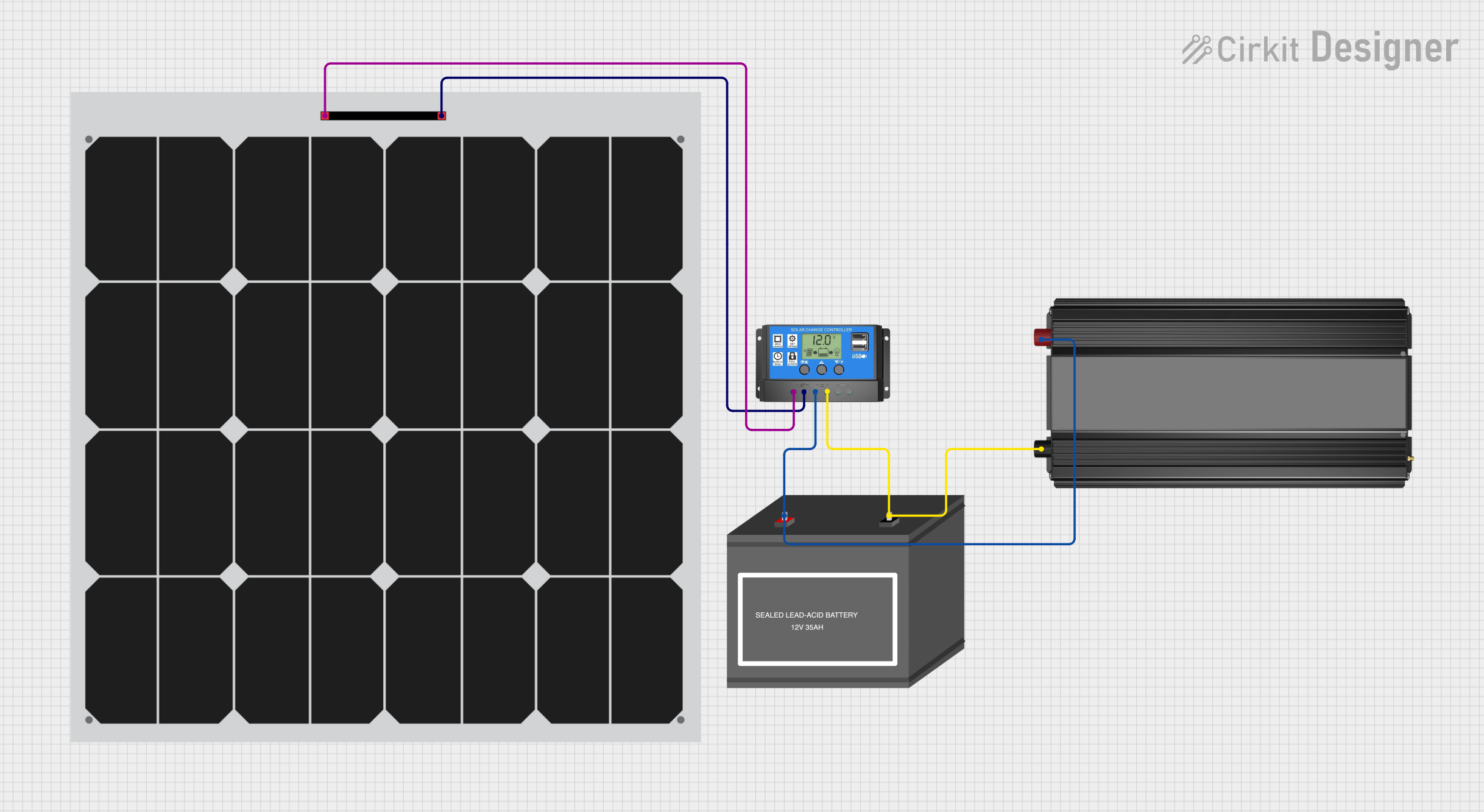
 Open Project in Cirkit Designer
Open Project in Cirkit Designer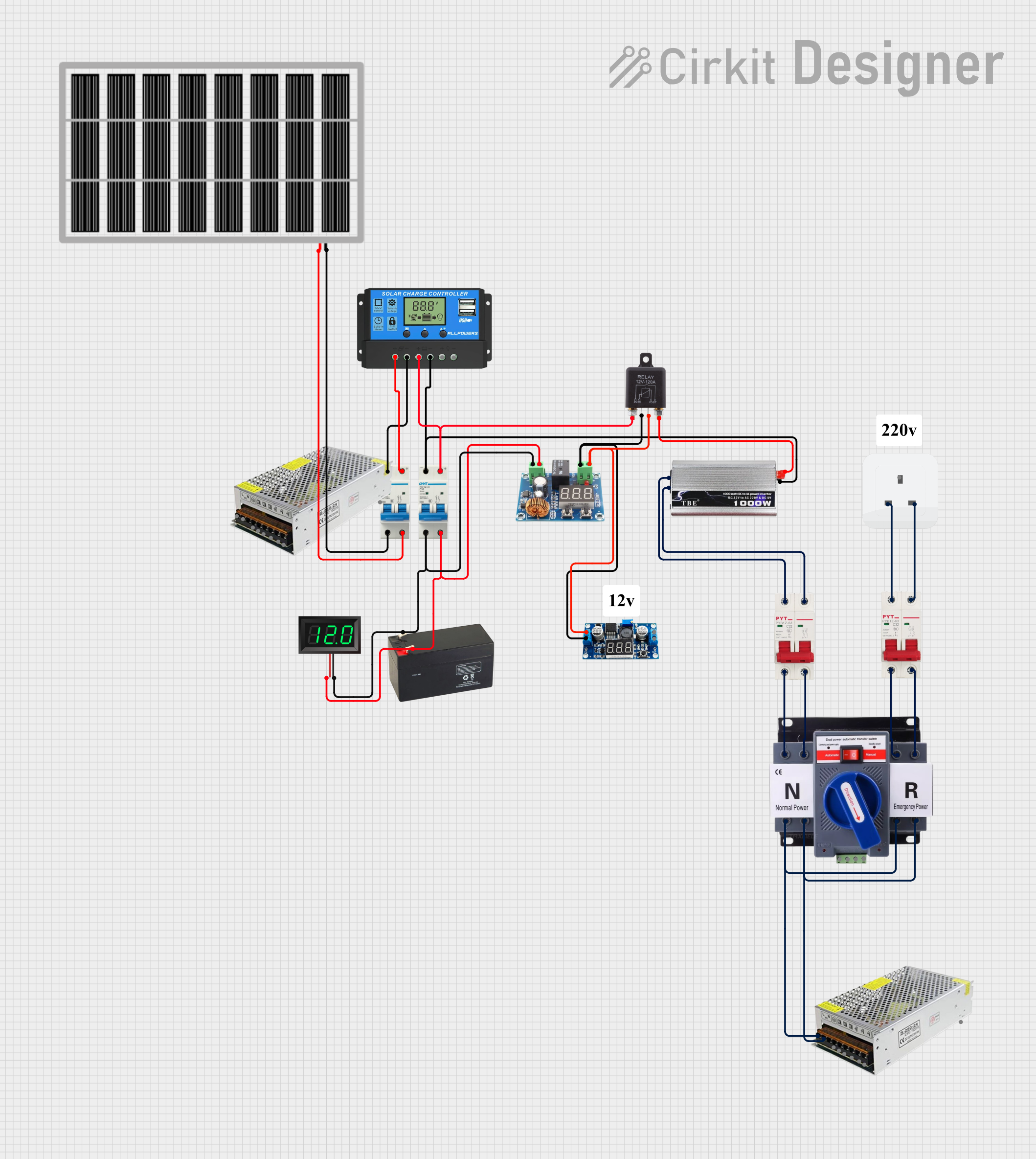
 Open Project in Cirkit Designer
Open Project in Cirkit Designer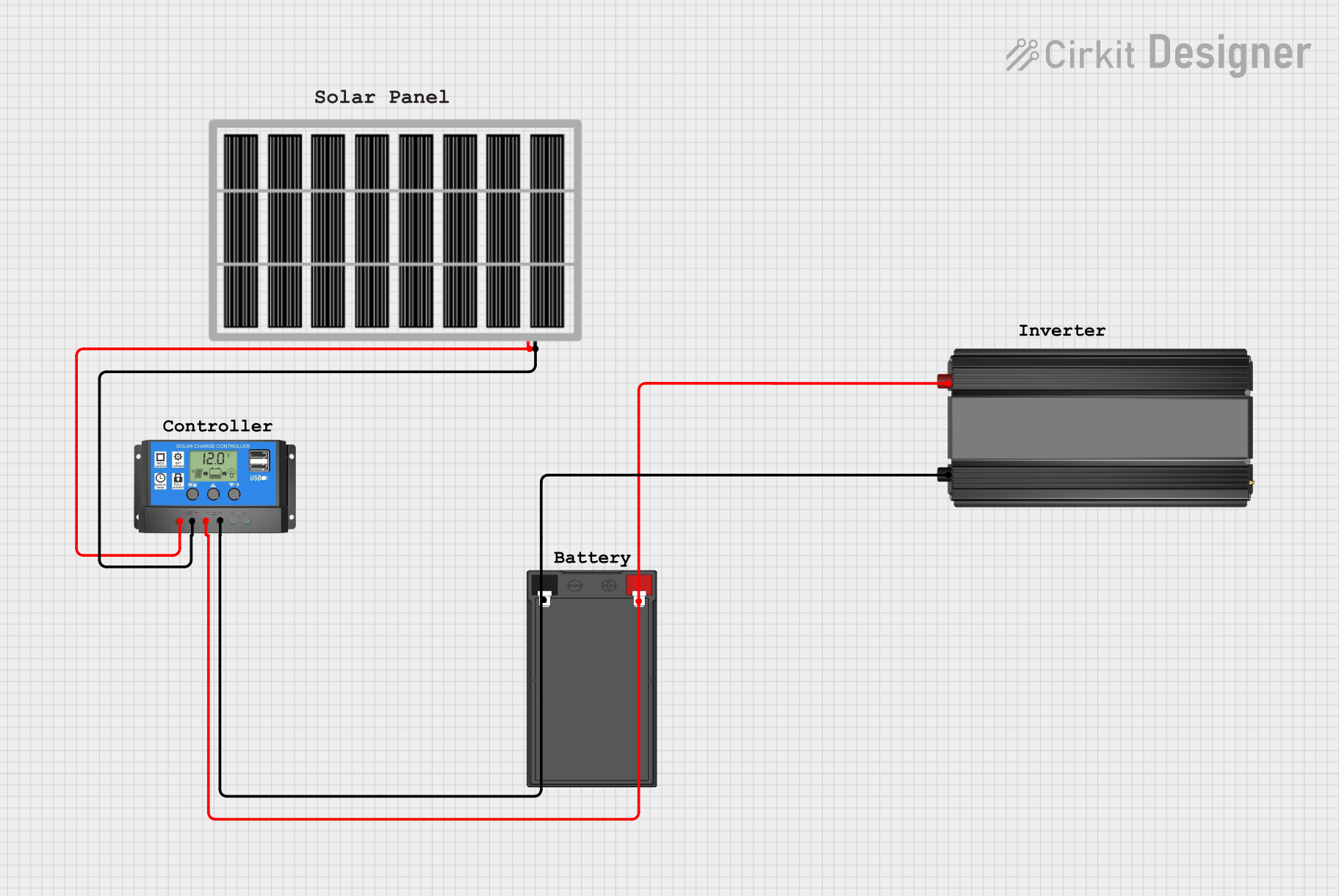
 Open Project in Cirkit Designer
Open Project in Cirkit DesignerExplore Projects Built with Inverter

 Open Project in Cirkit Designer
Open Project in Cirkit Designer
 Open Project in Cirkit Designer
Open Project in Cirkit Designer
 Open Project in Cirkit Designer
Open Project in Cirkit Designer
 Open Project in Cirkit Designer
Open Project in Cirkit DesignerCommon Applications and Use Cases
- Renewable Energy Systems: Converts DC from solar panels or wind turbines into AC for home or grid use.
- Uninterruptible Power Supplies (UPS): Provides backup AC power during outages.
- Portable Power Systems: Powers AC devices using batteries in off-grid or mobile setups.
- Electric Vehicles (EVs): Converts DC from the battery to AC for motor operation.
- Industrial Applications: Drives AC motors and other equipment from DC sources.
Technical Specifications
Below are the key technical details for the inverter manufactured by 1, with part ID 2:
General Specifications
- Input Voltage Range: 12V DC to 48V DC (varies by model)
- Output Voltage: 120V AC or 230V AC (depending on region)
- Output Frequency: 50Hz or 60Hz
- Output Waveform: Pure sine wave, modified sine wave, or square wave
- Efficiency: Up to 95% (depending on load and model)
- Power Rating: 100W to 5000W (varies by model)
- Operating Temperature: -10°C to 50°C
Pin Configuration and Descriptions
The inverter typically has the following input and output connections:
| Pin/Terminal | Label | Description |
|---|---|---|
| 1 | DC+ | Positive DC input terminal (connect to battery or DC source) |
| 2 | DC- | Negative DC input terminal (connect to battery or DC source) |
| 3 | AC Output (L) | Live terminal for AC output |
| 4 | AC Output (N) | Neutral terminal for AC output |
| 5 | Ground (GND) | Ground connection for safety and noise reduction |
| 6 | Remote Control | Optional terminal for remote on/off control (if supported by the model) |
Usage Instructions
How to Use the Inverter in a Circuit
Connect the DC Input:
- Ensure the DC source (e.g., battery) matches the inverter's input voltage range.
- Connect the positive terminal of the DC source to the
DC+pin and the negative terminal to theDC-pin.
Connect the AC Output:
- Connect the AC load (e.g., appliance) to the
AC Output (L)andAC Output (N)terminals. - If required, connect the ground wire to the
Ground (GND)terminal for safety.
- Connect the AC load (e.g., appliance) to the
Power On the Inverter:
- Turn on the inverter using its power switch or remote control (if available).
- Verify that the output voltage and frequency match the requirements of the connected load.
Monitor Operation:
- Use any built-in indicators (e.g., LEDs or displays) to monitor the inverter's status, such as input voltage, output power, or fault conditions.
Important Considerations and Best Practices
- Match Power Ratings: Ensure the inverter's power rating exceeds the total power consumption of connected devices.
- Use Proper Wiring: Use appropriately rated cables for both DC input and AC output to prevent overheating or voltage drops.
- Ventilation: Place the inverter in a well-ventilated area to prevent overheating.
- Battery Protection: Use a fuse or circuit breaker on the DC input to protect the battery and inverter from overcurrent.
- Grounding: Properly ground the inverter to reduce electrical noise and improve safety.
Example: Connecting an Inverter to an Arduino UNO
If you are using an inverter to power an Arduino UNO from a DC source, follow these steps:
- Connect the DC source to the inverter's input terminals.
- Connect the Arduino UNO's power adapter to the inverter's AC output.
- Turn on the inverter and verify that the Arduino UNO powers up correctly.
Here is an example Arduino code to blink an LED, assuming the Arduino is powered via the inverter:
// Simple LED Blink Example
// This code blinks an LED connected to pin 13 of the Arduino UNO.
void setup() {
pinMode(13, OUTPUT); // Set pin 13 as an output pin
}
void loop() {
digitalWrite(13, HIGH); // Turn the LED on
delay(1000); // Wait for 1 second
digitalWrite(13, LOW); // Turn the LED off
delay(1000); // Wait for 1 second
}
Troubleshooting and FAQs
Common Issues and Solutions
Inverter Does Not Turn On:
- Cause: Insufficient DC input voltage or loose connections.
- Solution: Check the DC source voltage and ensure all connections are secure.
No AC Output:
- Cause: Overload or fault condition.
- Solution: Reduce the load and reset the inverter. Check for fault indicators.
Overheating:
- Cause: Poor ventilation or excessive load.
- Solution: Ensure proper airflow around the inverter and reduce the load if necessary.
Noise or Interference:
- Cause: Improper grounding or low-quality output waveform.
- Solution: Verify the ground connection and consider using a pure sine wave inverter for sensitive devices.
FAQs
Q: Can I connect solar panels directly to the inverter?
A: No, you need a charge controller between the solar panels and the inverter to regulate the voltage and protect the battery.Q: What is the difference between pure sine wave and modified sine wave inverters?
A: Pure sine wave inverters produce a smooth AC waveform, suitable for sensitive electronics. Modified sine wave inverters are less expensive but may cause issues with certain devices.Q: How do I calculate the required inverter size?
A: Add up the power consumption (in watts) of all devices you plan to connect and choose an inverter with a power rating at least 20-30% higher than the total.Q: Can I use an inverter continuously?
A: Yes, as long as the inverter is within its rated capacity and properly ventilated, it can operate continuously.